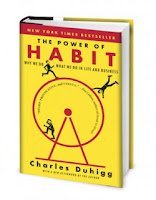 |
| We Create Tomorrow by What We Dream Today |
Do you believe “we create
tomorrow by what we dream today”? Maybe too many people rained on your parade,
dampening your give-it-all-you-got spirit and squashing your hope. Maybe someone said “Why do you want to do
that?” You second-guessed your dream, doubted your ability to accomplish your
goal, and gave up entirely on dreaming. “What’s
the use?” you mutter.
Perhaps these wise words from
Oscar Wilde may offer encouragement.
“If a thing is worth doing, it is worth doing well. If it is worth
having, it is worth waiting for. If it
is worth attaining, it is worth fighting for.
If it is worth experiencing, it is worth putting aside time for.”
We can apply Oscar Wilde’s wisdom to today’s key
message, “We create tomorrow by what we dream today.” The
word “create” means “make a thing that has not existed before”. Before we can create “a thing”, we need to know what we want to create. This analogy of
needing a dream before creation relates to the crazy idiom of “putting the cart before the horse”. It’s just doesn’t work. That’s why “dreams”
are important. You need to know,
“What’s your thing?”
I also hate to disappoint you but
there’s no Fairy-God Mother who can magically wave her wand to create your
dream. Effort and work are the magic. As I look at my blog website and see the
number of blog posts, I realize that they didn’t simply appear. I know some would ask, “Why do you want to do that?” but there’s a method to my
madness. It’s my desire to help people
understand that money matters and so do dreams.
Finding the right combination of strategies, financial products, and
desire is the magic that makes dreams come true. I want you to believe and
understand this “magic” yourself.
Seeing the possibilities, acting
on instinct, and plugging away at the tedious tasks move you closer to your
dream. The tasks may not be glamorous
but they are definitely necessary in order to purposely live life each
day. Early in January, John Maxwell
wrote 2016:Your Year of Living Intentionally. He explained the difference between good
intentions versus being intentional. Words associated with living a life of
intentionality are “action”, “purpose”, “definitely”, “today”. These active words
are an expression of commitment. Making
an effort to work towards your dreams requires commitment. If your dream is worth experiencing, it is worth
putting
aside time for.
Here is your assignment “to
create tomorrow”. Determine your dreams. Then use a Daily Planner to schedule appointments
with yourself to work on those dreams. A
new year with a new process opens the door to a world of new
possibilities. I am excited for you to
start.
 |
















